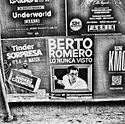Paul Verizzo
Member
An FYI.
I remember buying basic B&W contrast and polarizing filters for, say, $5 thirty years ago. Now, I see mostly $20 and up. Beyond inflation. Not the proverbial rocket science technology.
I found a source on eBay, Chinese, of course. I bought three 67mm filters for under $14. This particular vendor had a long shipping time, but they came a week before first date promised. Interestingly, from a business viewpoint, apparently shipped to a USA address and then forwarded. Whatever.
The hard plastic cases were made for retail display on pegs; bulky. But if you use a soft holder, no issue.
Source: https://www.ebay.com/itm/254025852174
I would not have spent the $75 or more to buy domestic to make better pictures.
I remember buying basic B&W contrast and polarizing filters for, say, $5 thirty years ago. Now, I see mostly $20 and up. Beyond inflation. Not the proverbial rocket science technology.
I found a source on eBay, Chinese, of course. I bought three 67mm filters for under $14. This particular vendor had a long shipping time, but they came a week before first date promised. Interestingly, from a business viewpoint, apparently shipped to a USA address and then forwarded. Whatever.
The hard plastic cases were made for retail display on pegs; bulky. But if you use a soft holder, no issue.
Source: https://www.ebay.com/itm/254025852174
I would not have spent the $75 or more to buy domestic to make better pictures.











